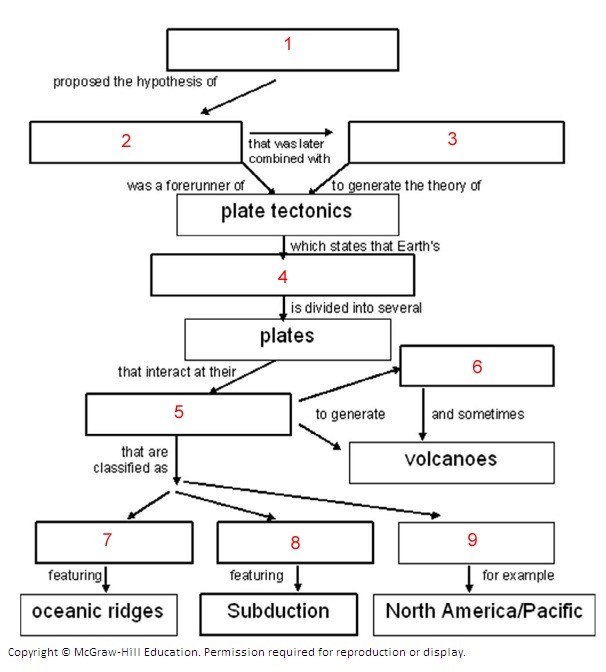A coyote can alter its diet to match seasonal abundance of plants, fruits, or small animals, and would therefore be considered ________
A) density independent and resource-neutral
B) an organism with a type II survivorship curve
C) an endemic, able to be flexible
D) a specialist, able to specialize on whatever is available at the time
E) a generalist, able to be flexible
E
You might also like to view...
Complete the concept map by selecting the best response for the question numbers listed. Complete the concept map by selecting the best response for question number 4.
Complete the concept map by selecting the best response for question number 4.
A. Crust B. Lithosphere C. Mantle
Among plants, a condition that results in an increase in the number of sets of chromosomes, is called
A. multi-genetics. B. haploid. C. polyploidy. D. diploid.
The "plastic" region of the upper mantle extending from about 70 km beneath Earth's surface to 250 km is known as the
A) Gutenberg discontinuity. B) Mohorovi?i? discontinuity. C) outer core. D) crust. E) asthenosphere.
Why does the distribution of benthic biomass mimic the distribution of surface water biomass?
a) these are areas of downwelling, where surface waters sink, providing nutrients for benthic organisms b) these areas of high productivity occur in the same location because these locations have the best environment c) food for most benthic organisms sinks to the seafloor from overlying surface water d) most of these places are shallow where sunlight penetrates to the seafloor, so photosynthesis can occur both in the water column and on the seafloor e) these areas have higher temperatures that are conducive to high productivity, whether it is benthic or pelagic